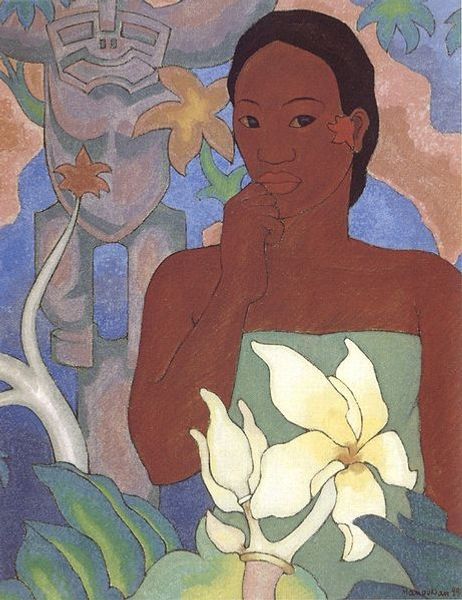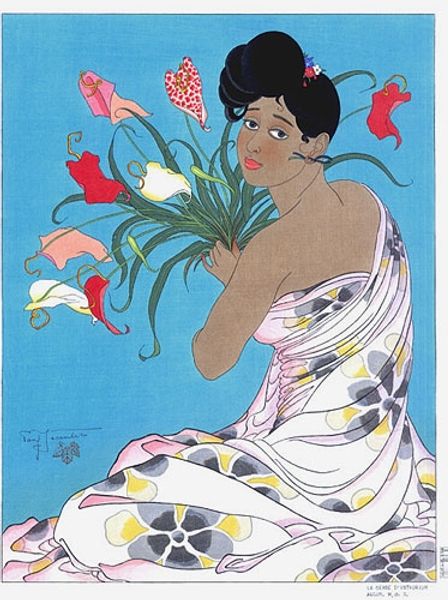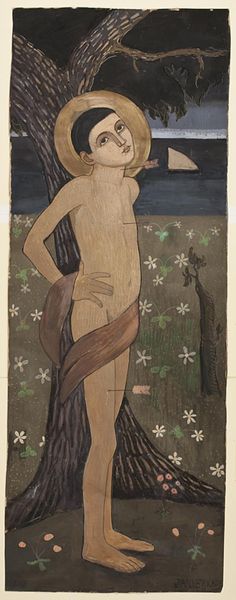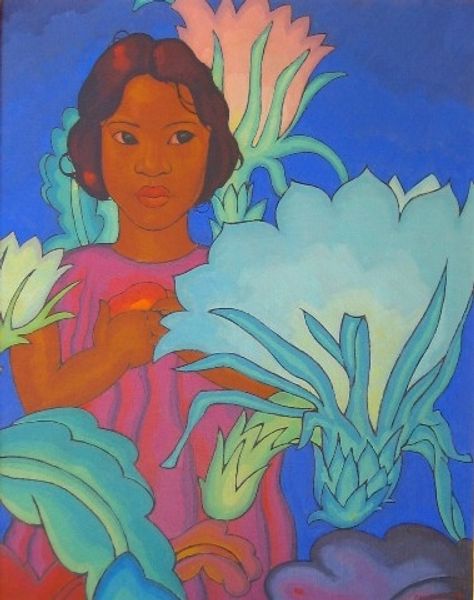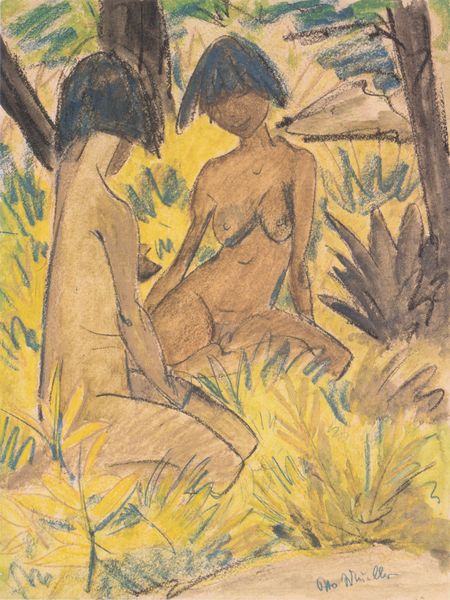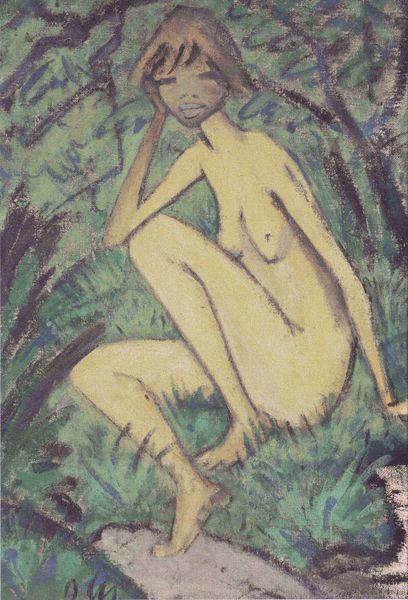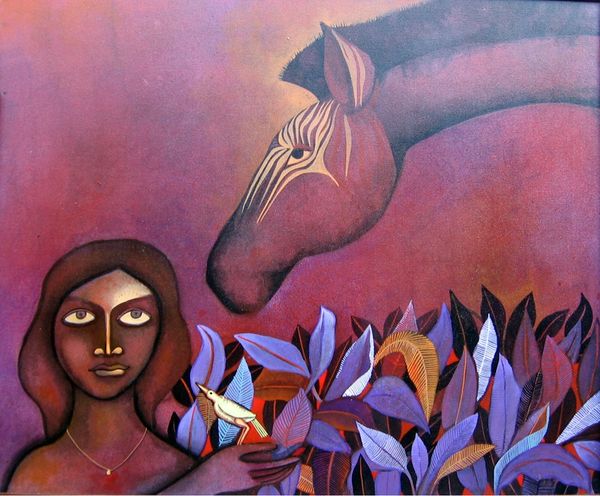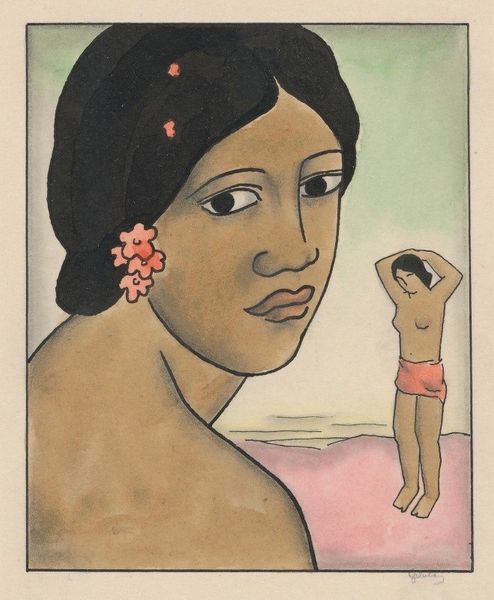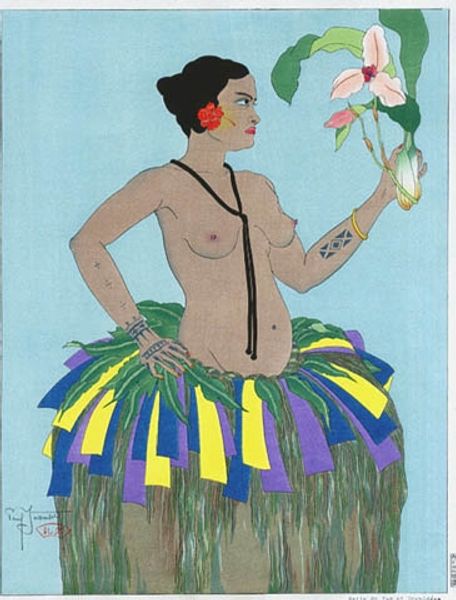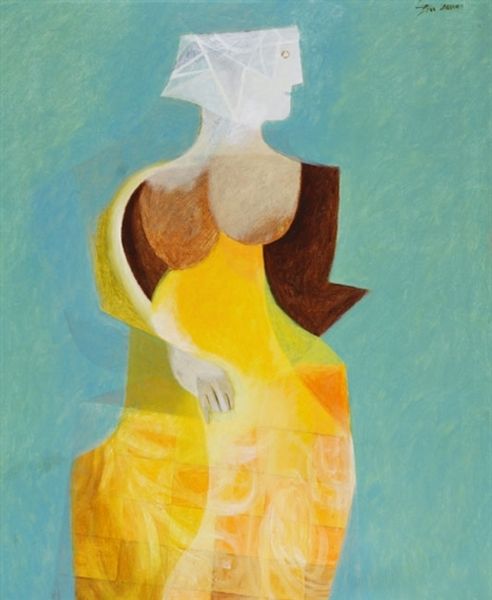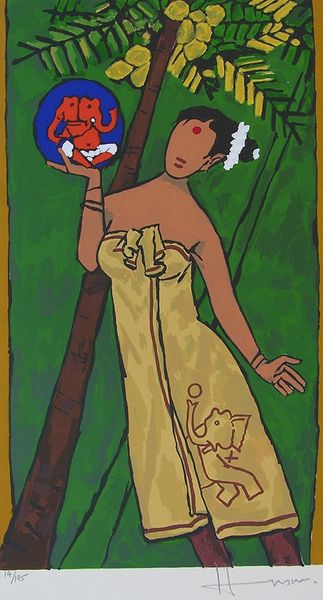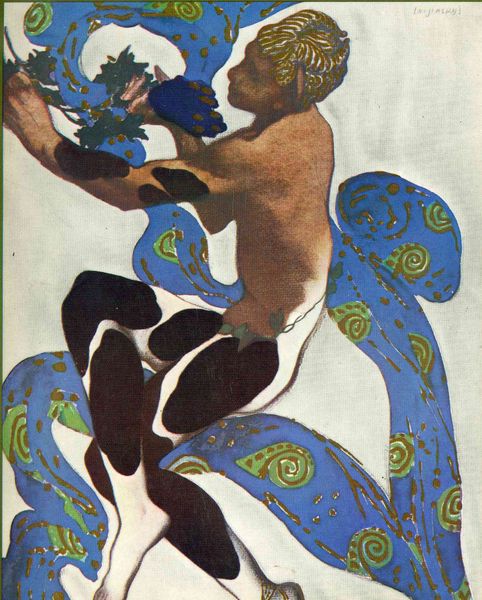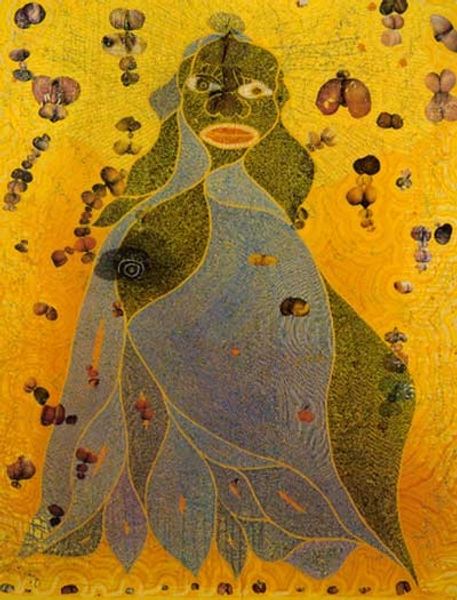
painting, acrylic-paint
#
portrait
#
art-deco
#
painting
#
landscape
#
caricature
#
acrylic-paint
#
figuration
#
acrylic on canvas
#
folk-art
#
naive art
Copyright: Public domain
Curator: We’re looking at "Hawaiian Woman" by Arman Manookian, painted in 1929. It's an acrylic on canvas. Editor: It's charmingly naive, almost cartoonish, in a way that invites you in. I’m immediately struck by the blocky shapes and somewhat flattened perspective. The handling of the paint feels very direct. Curator: The flattening serves a symbolic function. Note how the woman’s dress seems to merge with the surrounding flora. She embodies the land, doesn’t she? Her adornments and even her skin tone become symbols of Hawaii itself. Editor: Absolutely. And those stylized ginger blossoms and tapa-like patterns are quite fascinating when considered in relation to production practices. Manookian, although Armenian by birth, was profoundly shaped by the Hawaiian art scene, so how did he interpret or perhaps reinterpret local crafting methods through painting? The piece seems a far cry from actual tapa cloth. Curator: Interesting point! The artist perhaps abstracts them, re-presenting cultural memory, giving a nostalgic form to those patterns. Notice how she is placed in paradise but looking towards the unknown of the viewer's perspective. Editor: But even “paradise” is a crafted ideal. What materials were available to Manookian, and how did he utilize them to manufacture that ideal of island life and womanhood? I suspect his intended audience played a large part in material choices, too. Curator: True. He might have understood his audience viewed this subject through a certain cultural lens. This might inform how symbols are applied. Consider the tree; its trunk almost disappears into the background—it is like the loss of connection to that past. Editor: Which then brings us back to materials and craft. How much of this painting is truly 'Hawaiian', and how much is an outsider's impression? Where does observation meet expectation or even, perhaps, appropriation? Curator: These observations remind us how art both reflects and shapes cultural understanding. Editor: Indeed, it makes one reflect on how “place” is performed, painted, and even consumed through a very specific lens of production.
Comments
No comments
Be the first to comment and join the conversation on the ultimate creative platform.
